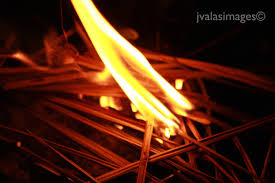A few years ago I was given the task of burning the palm leaves from Palm Sunday. The ashes were to be used for the next year’s Ash Wednesday service. Growing up Southern Baptist, I did not know of that tradition.
“Cool, I’ll be happy to,” I replied.
 So on the Wednesday evening after Palm Sunday, following a dinner at the church, I took my little propane torch and the palm branches out to the sidewalk behind the church. A group of children gathered. Kids love fire, don’t they? They watched as I torched the greenery and turned it into cinders. We scooped up the charred remains and put them in a bowl. That was it.
So on the Wednesday evening after Palm Sunday, following a dinner at the church, I took my little propane torch and the palm branches out to the sidewalk behind the church. A group of children gathered. Kids love fire, don’t they? They watched as I torched the greenery and turned it into cinders. We scooped up the charred remains and put them in a bowl. That was it.
Isn’t that life, though? The ashes represent the impermanence of life.
If we live long enough, we lose everyone. Eventually we lose everything. None of us knows if we will have another year or another day. That makes it all more vital, more sobering, and more joyful that we pay attention to each other and to our impermanent moments together.
I can struggle against my awareness of impermanence, I can deny it, I can ignore the fact that it is a part of the natural order. But when I do, I lose something vital about my life and my relationships.
When we love someone, nothing intensifies the preciousness of the relationship more than recognizing that it is temporary. The thought of losing that person reminds me how vital that person is in my life. Without that sense of impermanence, we all tend to take each other and our own lives for granted.
“Remember you are dust and to dust you will return.” It’s hard to remember that when we are waving palm branches, but Lent is here to remind us.
0 Comments until now
Add your Comment!